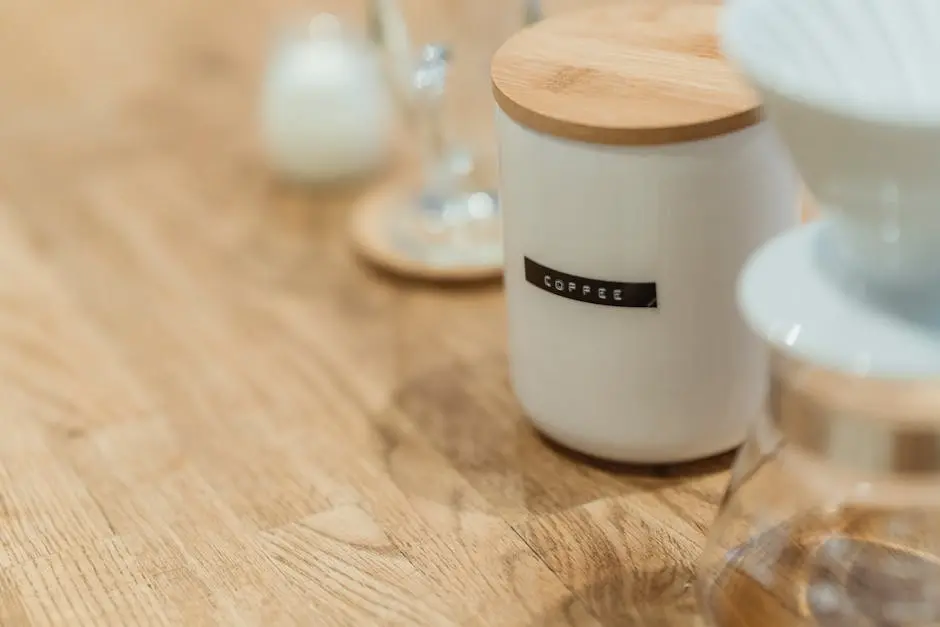9 Tips for Storing Fresh Roasted Coffee to Maintain Its Flavor
For coffee lovers, there's nothing quite like the rich aroma and delicious taste of fresh roasted coffee. However, keeping that fresh flavor intact requires proper storage techniques. In this guide, we’re diving into the best tips to ensure your coffee remains as flavorful as the day it was roasted.
1. Keep It Airtight
The enemy of fresh coffee is air. Store your beans in an airtight container to protect them from oxygen exposure, which can quickly degrade their quality. Airtight containers come in a variety of materials. However, it's crucial to choose those that genuinely seal tightly. Whether you're using a simple mason jar, a specialized coffee storage container, or even a vacuum-sealed option, the goal is to maintain that wonderful aroma and taste by limiting air exposure as much as possible. Always remember: the less air your coffee encounters, the more flavor you retain.
Moreover, consider combining airtight storage with an additional layer of protection using bags with valves. This combination offers a double shield against unwanted air exposure, ensuring that your coffee stays flavorful.
2. Store in a Cool, Dark Place
Heat and light can cause your coffee to lose its flavor. Keep your coffee in a cool, dark place, like a pantry, to preserve its taste for longer. Ideally, you want a spot that maintains a steady cool temperature without fluctuations. Avoid areas near ovens, sunlight, or any source of heat. When coffee is exposed to heat and light, its delicate oils can spoil, leading to a stale taste. Additionally, avoid storing coffee above or around household appliances that generate heat, ensuring your precious beans are shielded from anything that might alter their taste.
For coffee enthusiasts who live in warmer climates, it might be beneficial to invest in a cabinet or storage bin that offers a little extra insulation against the heat. A basement pantry or a cool corner of a kitchen is often a favorable spot for most people. You could also employ the usage of temperature-controlled spaces if available domestically.
3. Avoid Refrigeration
Contrary to popular belief, storing coffee in the refrigerator can introduce unwanted moisture and odors. It's best to keep it at room temperature. Many people make the mistake of assuming that refrigeration extends the freshness of coffee in the same way it would for other perishables. However, coffee is different. The refrigerator's environment can be both humid and odorous, both of which are detrimental to coffee's flavor profile. Your coffee might absorb the smells of stored foods, resulting in an unwanted flavor mix.
The only time refrigeration might make sense is if you’ve brewed an excess amount of coffee that you wish to use within a week or so. Even then, ensure it's stored in an airtight container, and consume promptly to enjoy the best flavors. For those interested in exploring optimal storage methods, consider looking into coffee enthusiasts' recommendations on storing your brew both fresh and brewed.
4. Limit Exposure to Moisture
Moisture is another factor that can spoil your coffee beans. Make sure your storage container is dry and leave a desiccant pack inside if needed. Moisture is notorious for being coffee's silent killer—inviting mold and rapidly degrading flavor. If you live in a humid area, consider preventing moisture incursion actively by using silica gel packs. These handy desiccants help absorb excess moisture in your container, creating an optimal dry environment for your coffee.
For those embarking on extended travel or who have large amounts of coffee to store, think about investing in larger scale moisture control solutions. Climate-controlled storage units can offer a comprehensive environment for larger stockpiles of beans, preserving integrity over long periods.
5. Use the Right Container Material
Glass, ceramic, or stainless steel containers are ideal for preventing flavor contamination. Avoid using plastic, as it can impart unwanted flavors. While plastic is lightweight and often cheaper, it can leach chemicals and odors into your coffee, altering its taste over time. On the other hand, non-porous materials like glass or ceramic maintain the original flavor as they do not absorb any scents. Stainless steel containers, especially those designed for coffee storage, are another excellent choice due to their durability and sleek appearance.
Remember, a worthy coffee container not only protects but displays your coffee effectively. A clear glass jar can show the beauty of the beans, but ensure it's stored in a dark place to avoid light damage. If curiosity prompts you, check out design features of coffee containers that protect flavor without compromising on style.
6. Buy in Small Batches
Purchase your coffee in small amounts to ensure you enjoy it at its freshest. This also prevents beans from sitting around too long and becoming stale. Buying smaller quantities means you're consuming coffee at its optimum flavor peak. Nature dictates that coffee begins to stale shortly after roasting, so limiting your stockpile helps to mitigate this process.
Consider establishing a buying schedule that aligns with your consumption rate. This ensures a constant supply of fresh coffee without wasting any. Purchasing from local roasters can also be a fun way to try new blends frequently. Discovering community roasteries and small batch suppliers can introduce you to exclusive flavors that larger suppliers might not offer.
7. Grind as You Go
For the best flavor, grind just before brewing. Pre-ground coffee can quickly lose its aroma and taste compared to whole beans. Once ground, coffee exposes more surface area to air, rapidly speeding up the oxidation process. Grinding fresh allows the coffee's oils to interact with water, producing a more robust, fresh cup with delightful aromas. It is an undeniable truth that once you've experienced the superiority of fresh-ground coffee, you'll never want to return.
Investing in a good quality grinder can significantly enhance your coffee experience. Options range from manual to electric, with burr grinders being preferred by aficionados for a more consistent grind. So, why not consider browsing some top grinder choices to elevate your coffee ritual to new heights?
8. Use Sealed Bags with Valve
If you prefer bags, opt for ones with a one-way valve, which allows carbon dioxide to escape while preventing air from getting in. These valves are discreet but serve an essential purpose. As coffee de-gasses post-roasting, it releases carbon dioxide. Without a proper outlet, this can cause the bag to inflate, ultimately compromising the beans. A one-way valve allows these gases to escape while safeguarding beans from harmful exposure to oxygen.
Such bags are particularly useful for travel or sharing small batches with friends or family. They offer a simple yet efficient solution to packaging while maintaining the taste integrity of your brew. For sustainable options, explore some eco-friendly coffee packaging which marries quality storage with environmental mindfulness.
9. Keep Track of the Date
Mark the roasting date and aim to use the beans within a few weeks. Freshness is key, and tracking the date helps you enjoy coffee at its peak. Coffee is a fresh produce, just like bread or vegetables, with an optimal consumption window. By being mindful of roasting dates, you ensure that each cup is as fresh as possible, brimming with nuanced flavors.
Regularly cycling through your stock can ensure nothing goes to waste. This habit can also spark curiosity to explore different roast dates and flavors, enhancing your appreciation of coffee's diversity. If you’re new to these practices, why not delve into some coffee experts' insights on maintaining freshness and flavor?


